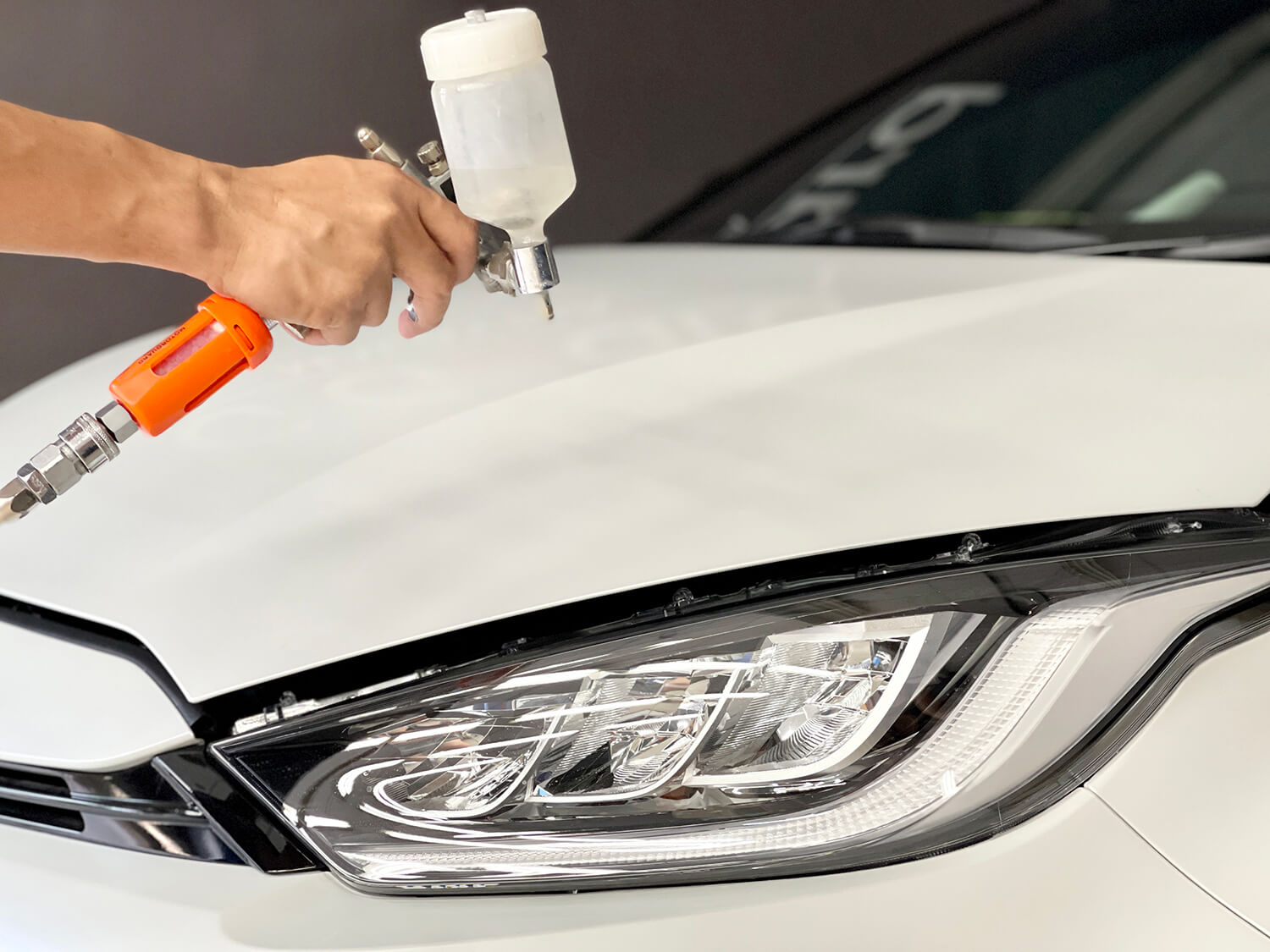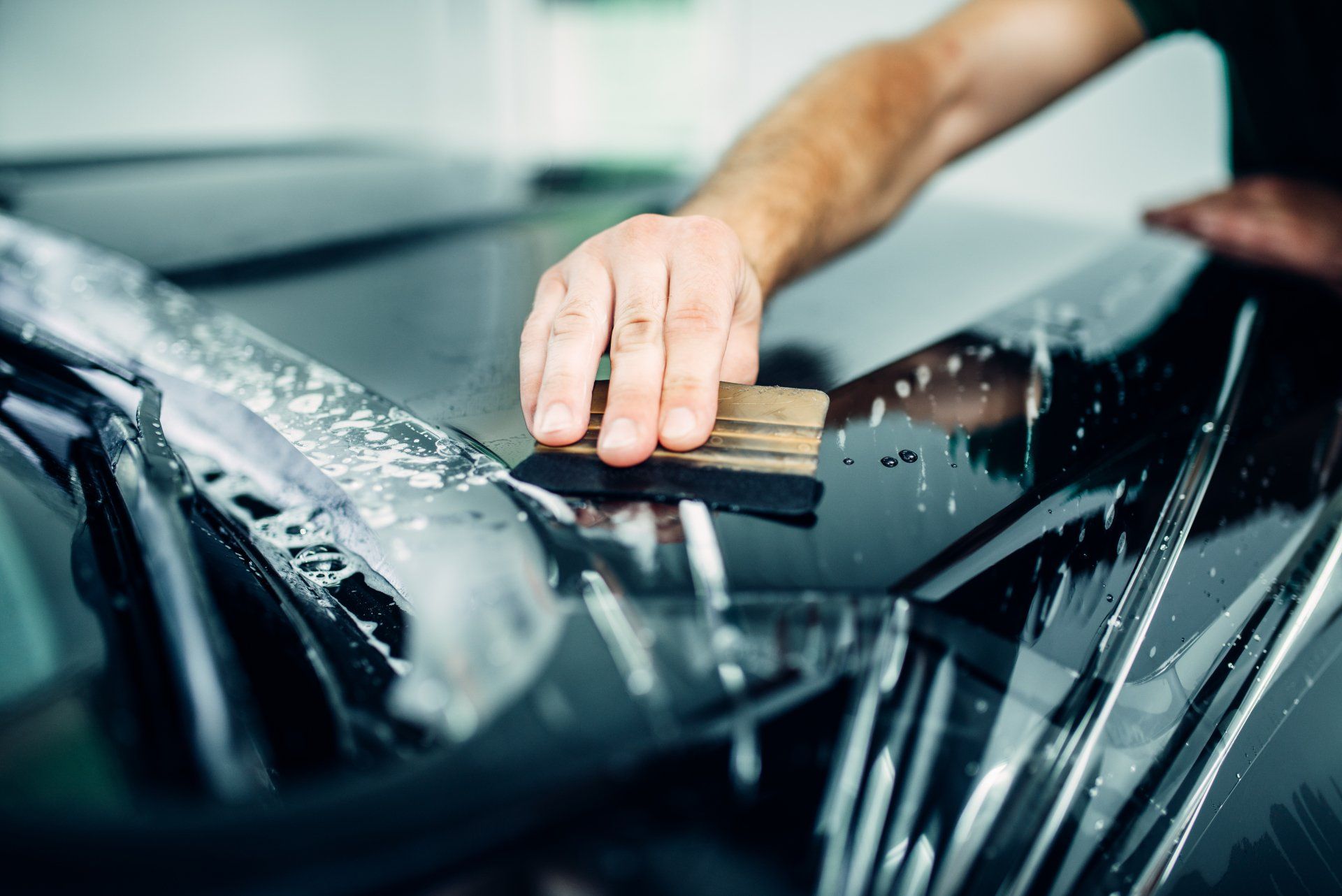Ceramic Coating vs. Typical Wax: Which Provides Better Protection?
The discussion in between ceramic covering and conventional wax for car security is one that merits cautious assessment, especially in terms of durability, resistance to ecological elements, and total upkeep demands. While ceramic coatings promise prolonged long life and premium defense versus a variety of risks, typical wax may appeal to those looking for an extra budget-friendly, albeit temporary, service.
Review of Ceramic Coating
Ceramic covering has actually gotten substantial popularity among automobile fanatics and experts alike for its sophisticated protective qualities. This innovative service contains a fluid polymer that chemically bonds to the car's manufacturing facility paint, forming a sturdy layer of protection. Unlike conventional wax, which commonly lasts for a few weeks to months, ceramic finishes can give long-lasting defense for several years, relying on the product made use of and application approach.

While the preliminary price of ceramic finish might be more than that of conventional wax, the lasting benefits, consisting of toughness and reduced maintenance regularity, usually justify the investment. As vehicle technology continues to advance, ceramic coatings have become a favored choice for those looking for optimum defense and durability for their cars.
Overview of Traditional Wax
The allure of traditional wax lies in its simpleness and convenience of usage, making it a favored selection amongst vehicle proprietors looking for to boost their vehicle's look and offer a fundamental degree of protection. Usually stemmed from all-natural carnauba or synthetic polymers, traditional wax forms a thin safety layer over the paintwork. The application procedure is simple, often entailing an easy rubbing with a microfiber fabric, making it easily accessible to both beginner and experienced individuals.
Typical wax products are available in various formulas, each made to satisfy details requirements, such as boosting shine or supplying water beading. The convenience of wax enables for use on different surface areas, consisting of paint, glass, and also plastic trim. While the application can be done by hand or equipment, the trick is to ensure a tidy surface for optimum bond.
Nevertheless, one remarkable attribute of standard wax is its reasonably short lifespan contrasted to modern alternatives. Commonly providing defense that lasts from a couple of weeks to a couple of months, regular reapplication is needed to maintain its performance. In spite of these limitations, traditional wax remains a popular choice for automobile enthusiasts who appreciate the visual improvement it supplies.
Key Protection Features
When considering paint protection for automobiles, it's important to understand the vital attributes that differentiate typical wax from more advanced alternatives like ceramic coverings. Among the key protective attributes of ceramic finishings is their longevity. Unlike wax, which normally lasts a couple of weeks, ceramic coatings can withstand for a number of years, giving long-term protection versus ecological contaminants.
Ceramic coatings create a hydrophobic surface, driving away water and protecting against dust, grime, and other particles from sticking to the paint. This attribute not only enhances the lorry's appearance yet additionally reduces the regularity of cleaning. In addition, ceramic coatings use premium UV protection, securing the paint from dangerous sun exposure that can lead to fading and oxidation.
On the other hand, traditional wax supplies a more momentary obstacle against elements however does not have the resistance to scratches and chemical stains that ceramic coverings provide. While wax can boost gloss, its protective capacities are restricted, particularly against harsher ecological aspects such as bird droppings, tree sap, and road salt. In summary, the crucial protection functions of ceramic finishes substantially outshine those of standard wax, making them a visit remarkable choice for lasting automobile treatment.
Application Process Comparison

In comparison, the application of ceramic coatings is much more time-sensitive and complicated, often calling for specialist assistance for ideal results. The automobile's surface have to be carefully cleaned up, decontaminated, and polished to get rid of blemishes before the finishing is applied. When prepared, the finish is used in numerous layers, with each layer calling for specific treating times, frequently enhanced by heat lamps. This careful process can span several hours to multiple days, depending on the variety of layers and desired finish.
Eventually, the selection in between wax and ceramic finishing hinges not only on protection degrees however also on the moment, experience, and resources readily available for their particular applications. - ceramic coating
Price Analysis and Durability
Price plays a considerable function in the decision-making procedure between ceramic finishings and typical waxes. Ceramic finishes generally regulate a higher ahead of time financial investment, ranging from $500 to $2,000 depending on the quality, brand, and expert application solutions. This preliminary price can be credited to the innovative modern technology and products made use of in ceramic solutions, which provide exceptional durability and security.
In comparison, conventional waxes are much more budget-friendly, typically costing between $20 to $100 for do it yourself applications. The long life of wax items is limited, commonly needing reapplication every couple of months to maintain their protective top qualities. This repeating expense can accumulate in time, making wax less affordable over time.
Ceramic finishes, while much more expensive initially, provide durable outcomes, frequently going beyond two to five years with proper upkeep. This longevity can supply considerable savings in time, particularly for car owners who focus on protection and visual conservation - ceramic coating. Ultimately, the selection in between conventional waxes and ceramic finishes should take into consideration both first prices and lasting worth, considering the upkeep demands and Going Here desired defense level for the vehicle
Conclusion
In summary, ceramic finishings provide superior security for vehicle paint compared to standard wax, offering boosted durability, resistance to environmental factors, and hydrophobic buildings. While the first investment for ceramic coatings is greater, their long life and reduced upkeep demands warrant the cost. Ultimately, for those looking for long-term automotive treatment and security, ceramic coatings represent a much more effective option than standard wax, which supplies only short-term benefits.
The discussion in between ceramic coating and traditional wax for vehicle protection is one that benefits cautious assessment, particularly in terms of durability, resistance to environmental elements, and overall maintenance requirements.When considering paint defense pop over to this web-site for vehicles, it's necessary to recognize the crucial attributes that identify traditional wax from even more advanced alternatives like ceramic finishings. In summary, the key defense features of ceramic finishings considerably outperform those of traditional wax, making them an exceptional choice for lasting vehicle care.
Ultimately, the choice between ceramic finishings and conventional waxes should consider both preliminary costs and lasting value, factoring in the upkeep needs and preferred protection degree for the automobile.
In summary, ceramic finishes provide superior protection for lorry paint contrasted to traditional wax, offering enhanced durability, resistance to ecological elements, and hydrophobic homes.